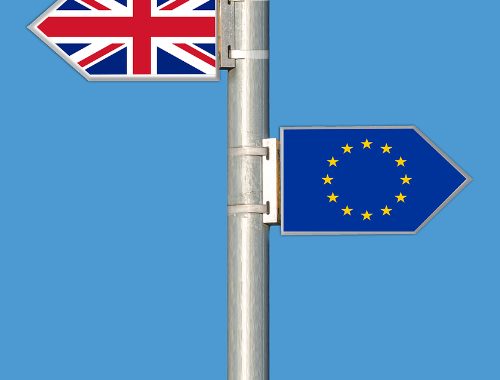BoE Governor Carney was 7-1/2 years old in October 1973, when OPEC cut its supply of crude oil to the advanced economies. Now he must prepare for a different kind of supply-side shock, as Britain exits the EU. Governor Carney has already threatened to hike rates as supply disruptions put upward pressure on prices in Britain, but is that the right policy response?
Back in 1973, Carl Weinberg was at the University of Pennsylvania, trying to use a large-scale global econometric model called LINK—with an articulated set of demand equations but an unsophisticated supply side—to simulate the oil price shock. “We learned that you could not apply the logic of a demand-side model to address a supply-side problem,” says Weinberg. Policies aimed at demand management that had always worked before to tame inflation—when excess demand was the culprit—led to bad outcomes.
Test it out yourself with a simple, two-handed model of supply and demand. Here’s Carl Weinberg to walk you through it:
- Hold up your left hand and call it “supply.” Now hold up your right hand and call it “demand.” Make sure you hold both hands level with each other: That would correspond to the way our thinking about this should start, with supply equal to demand.
- Now suppose there is a supply shock. In the Brexit transition, that might come from a reduction in the supply of labor via migration of jobless EU residents to Britain. Or Britain’s financial services industry might take a hit, wiping out 5% of GDP. These are just a few examples, but each suggests that your model of the economy—in this case your two hands—should respond by lowering your left hand because the economy will not be able to produce as much stuff. So please lower your left hand an inch or two. With your left hand lower than your right hand, demand is visibly greater than supply. Everything we know about economics tells us that when you have excess demand, prices will rise. That is what prices did in 1973, and that is what we all fear will happen in Britain after a hard Brexit.
- How should policy be used to get your hands level again? Back in 1973, some central banks tried to use tight monetary policy. You can simulate that by lowering your right hand. That will stabilize prices, but by inducing a deep recession: Both hands will be lower than they were before. Until the drop in demand becomes big enough, you will get a stagflation.
- In 1973, some governments tried using fiscal stimulus to offset the impact of the supply shock on national incomes. That pushes your right hand higher, widening the gap between demand and supply: Inflation is aggravated. Also, it blows out the current account, because the economy is demanding more goods and services than it can produce.
What is the solution? Ultra easy monetary conditions to encourage investment, which will rebuild the supply side of the economy as quickly as possible. In other words, raising your left hand back up to the level of your right hand. It seems counter-intuitive perhaps to cut interest rates in the face of inflation, but supply shocks are different than demand shocks.
Okay… you can stop waving your hands. If Brexit-related supply-side shocks evolve as anticipated, we can predict that prices will accelerate at first. What will happen next depends on the policy response. If the BoE hikes interest rates into this shock, Carl Weinberg predicts a deep economic recession. If the government insists on fiscal stimulus to try to lessen the income losses, it will contribute to stagflation and a whopping blow-out of the current account. If the BoE instead pushes interest rates to zero, allowing companies to invest like crazy to offset the supply shock… well, it may not be so bad.

